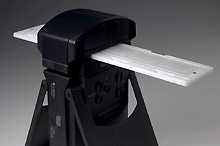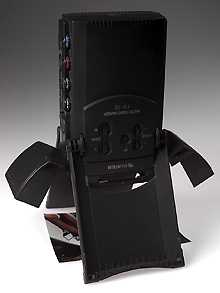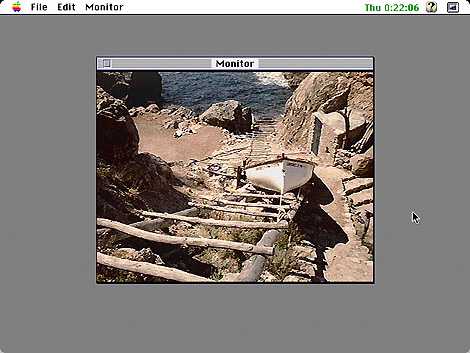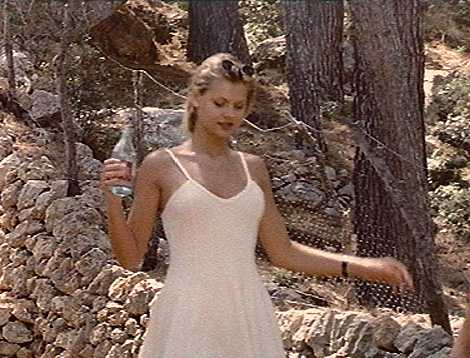The Fuji FV-10 as a digitiser
Report by Richard Kilpatrick


The Fuji FV-10 is possibly the most exciting photographic peripheral you
can add to a multimedia PC or Macintosh. For under £800 you get the
ability to create complete image databases, record movies, acquire 3D objects
as images for editing and web-sites, and even preview negatives.
Many of the latest PC systems, and nearly all Power PC Macintosh systems,
have some means of getting video input into the computer. The Performa 5200
which I use has a TV/Video in card, which is a cheap, low quality add-on
to provide for capture of Quicktime movies, which are quarter-screen and
16-bit colour. This limitation aside, the card is integrated into the Mac
system, and very easy to use.

For maximum quality, I connected the Fuji using the S-video connector.
This eliminates most of the noise which is present in composite video, but
it still shows some noise similar to that encountered on early digital cameras
like the Canon Ion. It is apparent that the images will be the right size
for a small window in a database p; however, as the screenshots show,
it is not really suitable for repro work.
The first test was capture of some rollfilm transparencies for Kenny Martin's
website (http://www.scotborders.co.uk/kmartin/).
Using a portable lightbox, the images were captured using the Apple Video
Player application, then converted to RGB JPEG files in Photoshop. Very
little correction was needed, except for the colour balance. The FV-10 has
adjustment via dials for colour balance and brightness, but it is not as
user-friendly as the joystick used on other systems. It is possible to zoom
in on areas of a slide, and masks are provided for cropping.
The FV-10 came down to the Switched On! exhibition at the G-Mex in Manchester.
The Apple was set up with the video on full screen, and one of David Marsh's
slides was displayed, under a print of the same image. The image is blocky
when on full screen, due to the Quicktime movie size of 332 pixels wide
being blown-up to 640 pixels. Ignoring this (which is a restriction of this
model of Macintosh), the colour rendition was very good, and the image was
sharp and well-lit. The built-in lights of the FV-10 are ideal for 35mm
slide and negative capture, but not so good for prints and 3D objects p;
they aren't powerful enough to act as video lights, and when capturing prints
they cause bright areas, which are difficult to avoid. Saved images are
sharper when opened in Photoshop than they appear through Mac video capture
programs.

A section of a negative - one eighth - enlarged to make a single column
repro in the printed edition. This worked very well in practice. A column
is 40mm wide.
Finally, the machine was used as a video camera, playing video in the background
in place of the desktop. The images were extremely sharp, and the autofocus
was quick to respond to changes. Surprisingly, the Apple didn't crash
whilst playing a CD, displaying moving video, running Netscape and two other
applications during Focus at the NEC. Many people asking where they could
buy one at the show, because of the many uses it has. Movies captured can
be used in presentations, edited, written to CD or recorded on video tape,
and with the advent of Painter 4, adding special effects is a real possibility.
Amiga and PC owners have a wider choice of hardware for capture and output,
and it would be possible to create short videos of high quality with an
inexpensive system.
The other use of the FV-10, as a transproofing system, will be dealt with
in a later issue.



